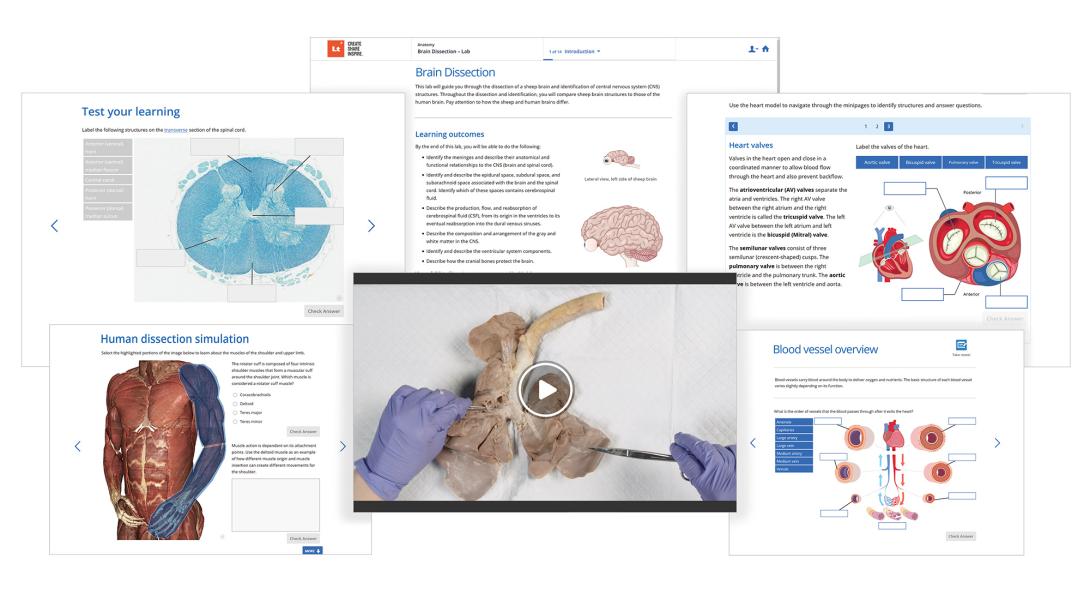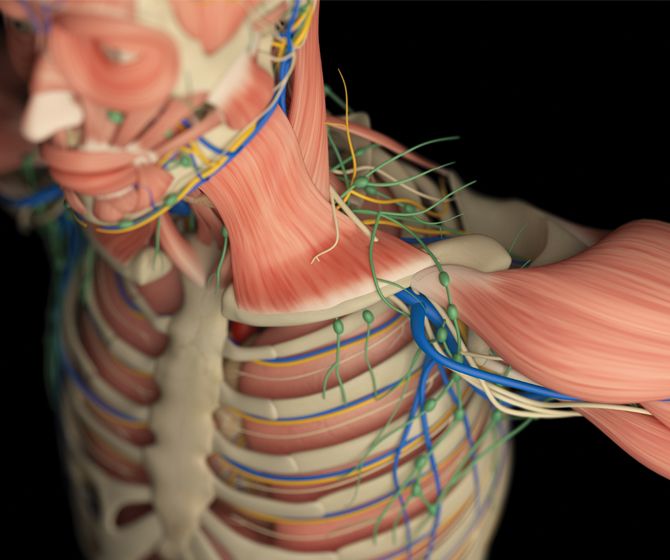Hello, I'm Bryce. I'm an Instructional Designer for Lt at ADInstruments. Every month our team of Instructional Designers meets for “Talking Teaching” – sessions where we share and discuss interesting articles, methods, and pedagogies.
In this blog, I’d like to share how Queen Mary University held online labs and discuss some methods that have been found to help increase student engagement and improve the online experience for students and instructors.
The article I'd like to share with you this month is:
Delivering online alternatives to the anatomy laboratory: early experience during the COVID-19 pandemic by Flynn et al. which details how the Anatomy Department at Queen Mary University dealt with holding anatomy practicals online while in lockdown. This article is published in Clinical Anatomy and is open access.
Successfully holding virtual laboratories
It seems like a daunting task to move a practical lab online. Online lectures can be difficult to manage already, but part of the physical labs is gaining a tactile familiarity with the material. The smell, the feel, visuospatial learning, interacting with others, and dealing with bodies that may or may not match “normal” are integral parts of a dissection.
“How are these aspects supposed to be taught online?” is a very good question that is challenging to answer.
Related: Getting the most out of dissection in anatomy teaching »
So, let’s take a look at how the Queen Mary University Anatomy department coped with moving practical lessons online. They used Garrison et al.’s (2000) Community of Inquiry (CoI) model, Visible Body, and Blackboard Collaborate to create a learning environment where their students could succeed.
For those who are unfamiliar with the CoI model, it is based on three things:
- Social presence: “The ability of participants to identify with the community (e.g., course of study), communicate purposefully in a trusting environment, and develop interpersonal relationships by way of projecting their individual personalities” (Garrison 2009).
- Cognitive presence: “The extent to which learners are able to construct and confirm meeting through sustained reflection and discourse” (Garrison et al. 2001).
- Teaching presence: “The design, facilitation, and direction of cognitive and social processes for the purpose of realizing personally meaningful and educationally worthwhile learning outcomes” (Anderson et al. 2001).
In short, students should be part of a supportive community where they can discuss, develop, and refine ideas. Creating this community online is one way to help your students succeed.
Classes were held in small groups consisting of one instructor or TA with 5–6 students, with time zones considered when the groups were formed. These groups were kept the same throughout the duration of the course. The instructor would screen share the dissection/demonstration so students got the exact same view. Students also had their own models which they could access anytime, if needed.
The lectures used by the instructor were interactive, so students could label key structures, ask questions in chat (or by simply talking through their microphone), and construct diagrams. These interactive activities help provide student-student interaction and student-instructor interaction which is hard to develop in an online environment. This also hits the main three ideas of the CoI. Students have an opportunity to display their personal characteristics and develop understanding through interaction with others. These interactions are aided by the educational environment which helps to enhance this learning.
Related: Discover ready-to-use labs for teaching anatomy online »
How engaged were students?
The faculty felt that student engagement was high throughout the course. Small group size along with interactive activities help to encourage working as a group. This increases student-student and student-instructor interactions and helps to create an environment where questions can be asked, answered, and feedback provided in real-time.
Group learning activities and interactions with models helped maintain student engagement, information retention, and knowledge application. 3D models proved to be essential to success. While students couldn’t physically interact with the models, the relevant information was passed down as much as it could be virtually.
Related: 10 free high-quality anatomy images for educators to download and use! »
What can I do to make my lab sessions work better online?
Does this mean you have to follow these exact steps and buy these tools to be successful? No.
While there are several tools and services that will make your life easier (Lt included), they aren’t the only way to improve your labs. The take-away lessons from this article are:
- Student engagement is important. Increasing interactivity is a good way to keep students motivated and engaged. Including activities like labeling structures, drawing diagrams, and answering questions is a good way to expose students to the material and keep them engaged.
- Student-student and student-instructor interaction is important. Small groups help facilitate interactions since trust is formed over time and students get to know each other better. This is why keeping the same instructor throughout the course worked so well. Forming small groups is also an emerging theme of successful online learning environments. These groups allow students to get to know each other and their instructor better which helps build trust, community, and a positive learning environment where students are more likely to be engaged, seek feedback, and ask questions.
![]()
- Use asynchronous and synchronous material. In case you haven’t run into this jargon before, “synchronous” material occurs for everyone at one time (live streams of lectures and zoom calls are examples). Recorded material designed to be viewed when convenient is “asynchronous” since it doesn’t require everyone participating to be in sync. It’s great that students can see exactly what the instructor is doing during the lab and have the concepts explained. It’s even better if they can review that information at their leisure.
- Be mindful of other stressors. The world at large is still dealing with the COVID-19 pandemic. Not only is this stressful, but dealing with things like: poor internet connections, distractions at home, and dealing with the “new normal” adds layers of stress to an already troubling time. There’s no magic way to solve these problems, so communication and compassion are our best bets.
- Be cognizant of time zones. Sometimes it’s best to let groups form themselves.
Join the discussion
How have you dealt with holding practical lessons online? Were your solutions similar to those in this article or did you find something completely different that worked for you?
Join us in the ADI: Educator Community on LinkedIn and let other educators know your thoughts!
Our online community is a hub for life sciences education in #highered, where you can share resources, ask questions, get feedback, and build meaningful relationships - across campus and across the globe!
Did you know that we have a complete curriculum of ready-to-use lessons and labs for teaching anatomy online?
Created in partnership with ToLTech, the Lt Anatomy Collection includes 30 lessons and labs that feature media-rich dissection and histology images and videos for teaching and assessments. These include cadaveric dissection images, animal organ dissection videos and images, exploration of anatomical models - plus a whole lot more!
Check out some of the top features from our Heart Dissection Lab »
Find out more about the Lt Anatomy Collection »
Additional Resources:
Resources for educators: The HAPS Anatomy Learning Outcomes »
10 tips for teaching online – How to successfully teach remotely and keep your students engaged »
How to Improve digital literacy in course design »
Lt Anatomy Collection: See inside our Bone and Cartilage Histology Lab »

